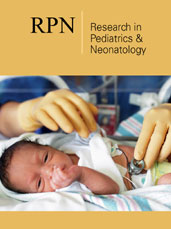- Submissions

Abstract
Research in Pediatrics & Neonatology
Clinical Case of a 7-Year-Old Child with Newly Diagnosed Intermittent form of Maple Syrup Urine Disease
-
Open or CloseHalyna Bulak1* and Sofiia Pitula2
1Associate Professor, Department of Pediatrics №2, 1st Territorial Medical Association of Lviv, Danylo Halytsky Lviv National Medical University, Ukraine
2Danylo Halytsky Lviv National Medical University, Ukraine
*Corresponding author: Halyna Bulak, Associate Professor, Department of Pediatrics №2, 1st Territorial Medical Association of Lviv, Danylo Halytsky Lviv National Medical University, Ukraine
Submission: April 23, 2025;Published: May 16, 2025

ISSN : 2576-9200Volume8 Issue3
Abstract
Maple syrup urine disease (MSUD) is an autosomal recessive genetic disorder caused by a deficiency of branched-chain alpha-ketoacid dehydrogenase (BCKAD). This condition results in the accumulation of branched-chain amino acids (BCAAs): leucine, isoleucine and valine. With five recognized clinical variants, the disease varies in severity and the clinical spectrum is quite broad. The classic form of MSUD can be recognized by the characteristic odor of maple syrup in the cerumen at 12 to 24 hours and in the urine at 48 to 72 hours after birth. Following the introduction of extended neonatal screening, cases of the disease are being detected earlier and treatment is being initiated before the onset of symptoms. However, this clinical case presents an intermittent form of MSUD newly diagnosed in a 7-year-old child with signs of metabolic intoxication and encephalopathy. The diagnosis was difficult as other conditions were more likely due to the postnatal placement of the ventriculoperitoneal shunt and the lack of detection of maple syrup smell in the urine. Treatment with diuretics and a protein-free diet significantly improved the child’s condition. Further management includes restriction of branched-chain amino acid intake and regular metabolic monitoring.
Keywords:Maple syrup urine disease (MSUD); Branched-chain amino acids (BCAAs); Branched-chain alpha-ketoacid dehydrogenase (BCKAD); Intermittent form of MSUD
Abbreviations: MSUD: Maple Syrup Urine Disease; BCAAs: Branched-Chain Amino Acids; BCKAD: Branched-Chain Alpha-Ketoacid Dehydrogenase; CT: Computed Tomography; TMA: Territorial Medical Association; EEG: Electroencephalography; CMV: Cytomegalovirus; EBV: Epstein-Barr virus; MRI: Magnetic Resonance Imaging; ECG: Electrocardiogram
 a Creative Commons Attribution 4.0 International License. Based on a work at www.crimsonpublishers.com.
Best viewed in
a Creative Commons Attribution 4.0 International License. Based on a work at www.crimsonpublishers.com.
Best viewed in 







.jpg)






























 Editorial Board Registrations
Editorial Board Registrations Submit your Article
Submit your Article Refer a Friend
Refer a Friend Advertise With Us
Advertise With Us
.jpg)






.jpg)














.bmp)
.jpg)
.png)
.jpg)










.jpg)






.png)

.png)



.png)






